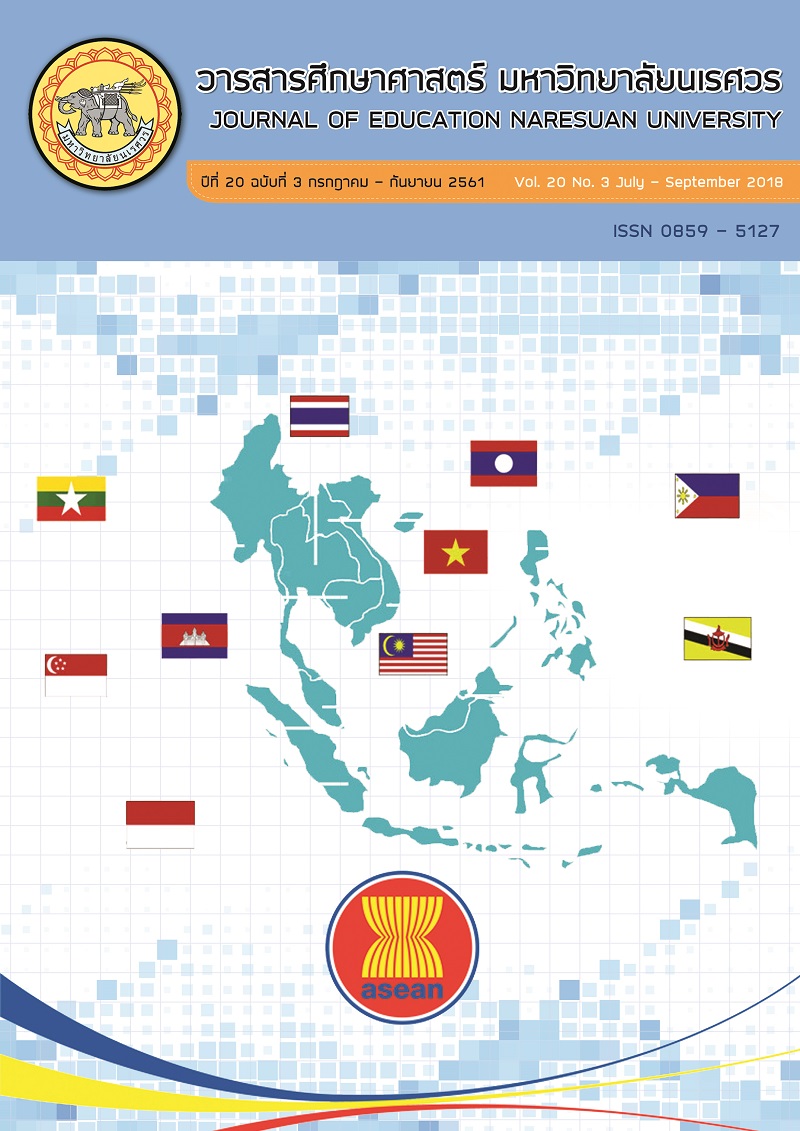THE INTEGRATION OF CO-TEACHING AND BLENDED LEARNING TO IMPROVE STUDENTS’ ENGLISH SKILL IN THAILAND
Main Article Content
Abstract
This article was written based on two major aims. One aim was to review the texts on English-related policies and problems in Thailand; co-teaching; and blended learning. Another aim was to propose a concept integrating co-teaching and blended learning into new teaching models to improve students’ English skills. This article utilized the construct of a literature study. The data were derived from existing documents including relevant books, researches, and articles. After being collected, the gathered texts were analyzed and reviewed. From the reviews were acquired novel possible models. This literature study found that both co-teaching and blended learning have been deployed to facilitate English language learning. Eliciting from the two concepts, three possible models were introduced, namely the co-station rotation model, the co-lab rotation model, and the co-flipped classroom model.
Article Details
The owner of the article does not copy or violate any of its copyright. If any copyright infringement occurs or prosecution, in any case, the Editorial Board is not involved in all the rights to the owner of the article to be performed.
References
Al-Saaideh, Mon'im A., & Al-Zyoud, Mohammad Sayel Nasr-allah. (2016). Benefits of teaching interdisciplinary subjects collaboratively in Jordanian pre-vocational education. Retrieved from http://www.academicjournals.org/ journal/ERR/article-full-text-pdf/9E876DA55805
Chapman, D. J. (2016). Teacher perspectives on co-teaching in a content classroom with English language support. Retrieved from http://digitalcommons.hamline.edu/cgi/ viewcontent.cgi?article=5101&context=hse_all
Dekeyser, D. M. (2007). Practice in a second language. Retrieved from https://research-srttu.wikispaces.com/file/view/ Robert+DeKeyser+Practice+in+a+Second+Language+Perspectives+from+Applied+Linguistics+and+Cognitive+Psychology+Cambridge+Applied+Linguistics++2007.pdf
Hamdan, N., Mcknight, P., Mcknight, K., & Arfstrom, K. M. (2013). A Review of flipped learning. Retrieved from http://flippedlearning.org/wp-content/uploads/2016/07/ LitReview_FlippedLearning.pdf
Honigsfeld, A., & Dove, M. (2008). Co-teaching in the ESL classroom. Retrieved from http://www.njtesol-njbe.org/handouts10/DoveHonigsfeld_Methods.pdf
Honigsfeld, A., & Dove, M. (2010). Collaboration and co-teaching: Strategies for English learners. Thousand Oaks, CA: Corwin press.
Horn, M., & Staker, H. (2015). Blended: Using disruptive innovation to improve schools. San Francisco: Jossey-Bass.
Huang, R. H., Zhou, Y. L., & Wang, Y. (2006). Blended learning: Theory into practice. Beijing: Higher Education Press.
INACOL. (2015). Blending learning: The Evolution of online and face-to-face education from 2008–2015. Retrieved from http://files.eric.ed.gov/fulltext/ED560788.pdf/
Lars Jacob Ege Larsen. (2012). Teacher and student perspectives on a blended learning intensive English program writing course. Retrieved from http://lib.dr.iastate.edu/cgi/viewcontent.cgi?article=3382&context=etd
Mala, D., & Fredickson, T. (2016, January 2). ASEAN community challenges Thai English skills. Retrieved from http://www.bangkokpost.com/learning/learning-from-news/ 813852/asean-community-challenges-thai-english-skills
Noom-ura, S. (2013). English-Teaching Problems in Thailand and Thai Teachers’ Professional Development Needs. Retrieved from http://files.eric.ed.gov/fulltext/EJ1078705.pdf
Punthumasen, Pattanida. (2006). International program for teacher education: An approach to tackling problems of English education in Thailand. Retrieved from http://www.unescobkk.org/fileadmin/user_upload/apeid/Conference/ 11thConference/papers/3C3_Pattanida_Punthumasen.pdf
Reinhardt, K. M., & Egan, R Q. (2016). Challenges and triumphs of co-teaching in the world language classroom. Retrieved from http://www.csctfl.org/documents/2016Report/ 9_Reinhardt_&_Egan.pdf
Sedjiu, S. (2014). English language teaching and assessment in blended learning. Retrieved from: http://jotlt.indiana.edu/article/download/5043/19707
Shaykina, O. I. (2015). Blended learning in English language teaching: Open educational resources used for academic purposes in Tomsk Polytechnic University. Retrieved from http://www.mcser.org/journal/index.php/ mjss/article/view/6778/6487
Stefánsson, E. G. (2013). Second language acquisition: The effect of age and motivation. Retrieved from http://skemman.is/stream/get/1946/15018/35741/1/BA_EinarG.pdf
Staker, H., & Horn, M. B. (2012). Classifying K–12 blended learning. Retrieved from http://www.christenseninstitute.org/wp-content/uploads/2013/04/Classifying-K-12-blended-learning.pdf
Thongampai, P. & Yamkasikorn, M. (2017). A case study of a research and development project for teachers in science, mathematics, and computer in the English integrated studies school network. Journal of Education Naresuan University, 19(1), 316-328.
The Ministry of Education of Thailand. (2008). The basic education core curriculum. Retrieved from: http://www.act.ac.th/document/1741.pdf


